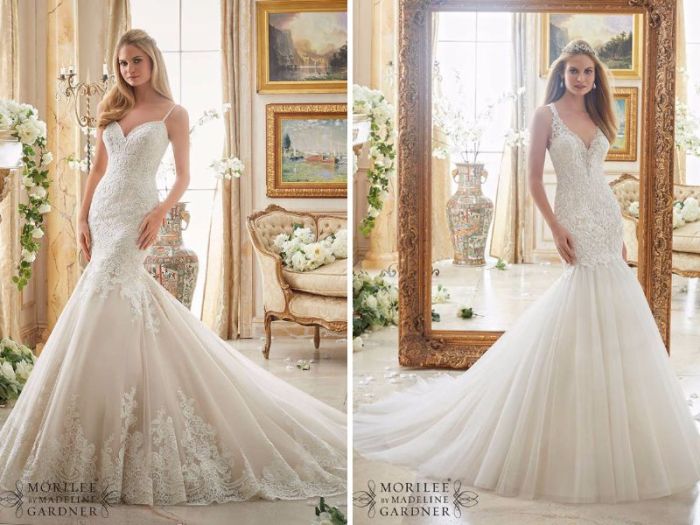Wedding Dress Alteration Costs: A Comprehensive Guide: How Much Are Alterations For A Wedding Dress

Source: josabimariees.com
How much are alterations for a wedding dress – The cost of altering a wedding dress can significantly impact your overall budget. Understanding the factors that influence pricing, obtaining accurate quotes, and planning the alteration process are crucial for a smooth and financially responsible experience. This guide provides a detailed breakdown of wedding dress alterations, helping you navigate the process with confidence.
Factors Affecting Wedding Dress Alteration Costs

Source: josabimariees.com
Several factors contribute to the final cost of wedding dress alterations. These include the type and complexity of alterations needed, the fabric of the dress, the seamstress’s experience and location, and the style of the dress itself.
The type of alteration significantly impacts the price. Simple hemming is generally less expensive than intricate alterations like taking in seams, adding sleeves, or altering the bodice. Complex alterations requiring significant reconstruction or specialized techniques will naturally cost more.
The dress’s design complexity plays a crucial role. A heavily embellished dress with intricate beading, lace, or embroidery will require more time and skill to alter, increasing the cost. Simpler designs with clean lines and minimal embellishments are generally less expensive to alter.
Fabric type also influences the cost. Delicate fabrics like silk, lace, and tulle can be more challenging and time-consuming to work with, leading to higher alteration costs. Sturdier fabrics like satin or taffeta are typically easier to alter.
The seamstress’s experience and location are key factors. Experienced seamstresses with a proven track record often charge more than those with less experience. Location also plays a role; seamstresses in major metropolitan areas tend to have higher overhead costs and may charge more than those in smaller towns.
| Alteration Type | A-line Dress Cost (Estimate) | Ballgown Dress Cost (Estimate) | Mermaid Dress Cost (Estimate) |
|---|---|---|---|
| Hemming | $75 – $150 | $100 – $200 | $125 – $250 |
| Taking in Seams | $100 – $200 | $150 – $300 | $175 – $350 |
| Adding Sleeves | $200 – $400 | $250 – $500 | $300 – $600 |
| Bodice Alterations | $150 – $300 | $200 – $400 | $250 – $500 |
Note: These are estimates and actual costs may vary depending on the specific dress and seamstress.
Getting Accurate Price Quotes
To ensure you receive accurate and transparent pricing, it’s essential to ask potential seamstresses specific questions and provide them with all necessary information.
- Ask for a detailed breakdown of costs, including hourly rates or per-alteration fees.
- Inquire about their experience with similar dress styles and fabrics.
- Ask about their turnaround time and whether they offer rush services (and any associated extra fees).
- Clarify their policies regarding fittings, revisions, and payment schedules.
Bringing your dress for an in-person consultation is crucial. This allows the seamstress to assess the dress’s condition, fabric, and necessary alterations accurately. This in-person assessment will lead to a more precise quote.
Here’s a sample email to request a quote:
Subject: Wedding Dress Alteration Quote Request
Dear [Seamstress Name],
I am interested in getting alterations for my wedding dress. I would appreciate it if you could provide a quote. The dress is a [dress style], made of [fabric], and I need the following alterations: [list alterations]. I am available for a consultation on [dates/times]. Please let me know your availability and pricing structure.Sincerely,
[Your Name]
[Your Phone Number]
[Your Email Address]
Understanding different pricing structures is vital. Some seamstresses charge hourly rates, while others charge a per-alteration fee. Comparing quotes based on different pricing structures requires careful consideration.
Understanding the Alteration Process, How much are alterations for a wedding dress
The wedding dress alteration process typically involves several steps, each with its own timeframe.
- Initial Consultation and Measurement (1-2 hours): The seamstress assesses the dress and takes measurements.
- Pinning and Fitting (2-4 hours): The seamstress pins the alterations and you have a fitting to ensure everything fits correctly.
- Alterations (Variable): This step varies significantly depending on the complexity of the alterations, ranging from a few hours to several days.
- Final Fitting (1-2 hours): A final fitting to check for any adjustments needed.
Potential issues during alterations may include fabric damage, unforeseen fitting problems, or delays. Open communication with your seamstress and proactive problem-solving are key to addressing these issues effectively.
Budgeting for Alterations
Incorporating alteration costs into your wedding budget requires careful planning. Consider various budgeting strategies to accommodate alteration expenses.
Saving money by choosing a less expensive seamstress is possible, but prioritize experience and skill over solely focusing on price. A less experienced seamstress might require more fittings or corrections, potentially negating any initial cost savings.
| Expense Category | Estimated Cost | Actual Cost | Notes |
|---|---|---|---|
| Dress Purchase | $1500 | $1450 | Purchased on sale |
| Alterations | $300 | $350 | More complex alterations than initially anticipated |
| Venue | $5000 | $5000 | |
| Photographer | $2000 | $2000 |
Finding Reputable Seamstresses

Source: everafterguide.com
Selecting a reputable seamstress is crucial for a successful alteration experience. Consider factors such as experience, reviews, and portfolio.
Finding qualified seamstresses can be done through referrals from friends or family, online searches, or bridal shops. Reviewing testimonials and portfolios provides valuable insights into their skill and attention to detail.
During consultations, ask about their experience with wedding dress alterations, their approach to problem-solving, and their communication style. This ensures a smooth and satisfactory alteration process.
Question & Answer Hub
What’s the average cost range for wedding dress alterations?
The average cost varies greatly depending on the type and extent of alterations needed, ranging from a few hundred to over a thousand dollars.
How far in advance should I schedule my alterations?
Ideally, schedule your first consultation 6-8 weeks before your wedding date to allow ample time for alterations.
Can I alter my dress myself?
Unless you have extensive sewing experience, it’s highly recommended to entrust your wedding dress alterations to a professional seamstress.
What should I do if I’m unhappy with the alterations?
Communicate your concerns with the seamstress immediately. Most reputable seamstresses will work with you to address any issues.
What payment methods do seamstresses typically accept?
Seamstresses typically accept cash, checks, and credit cards. Always clarify payment terms beforehand.
